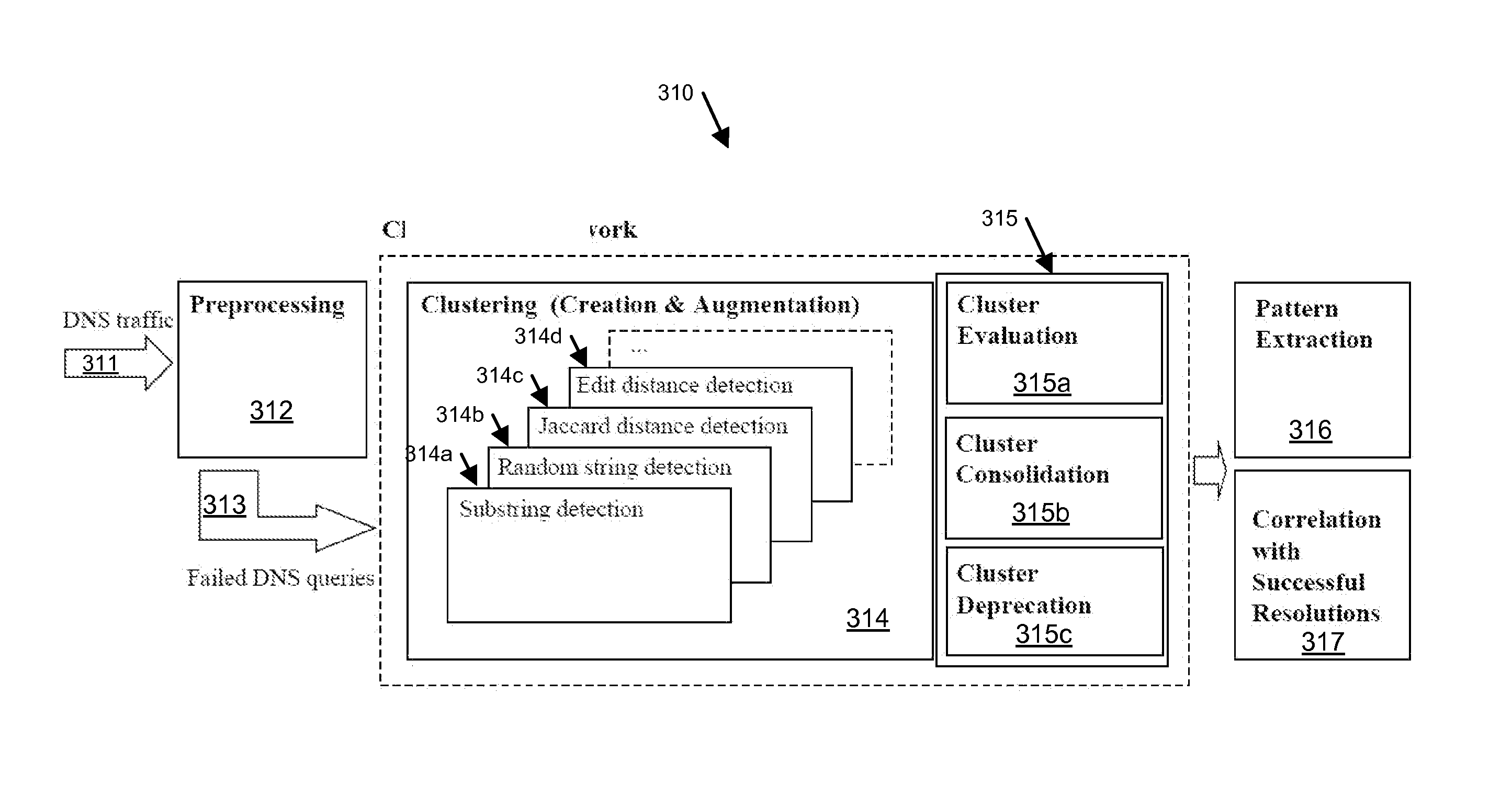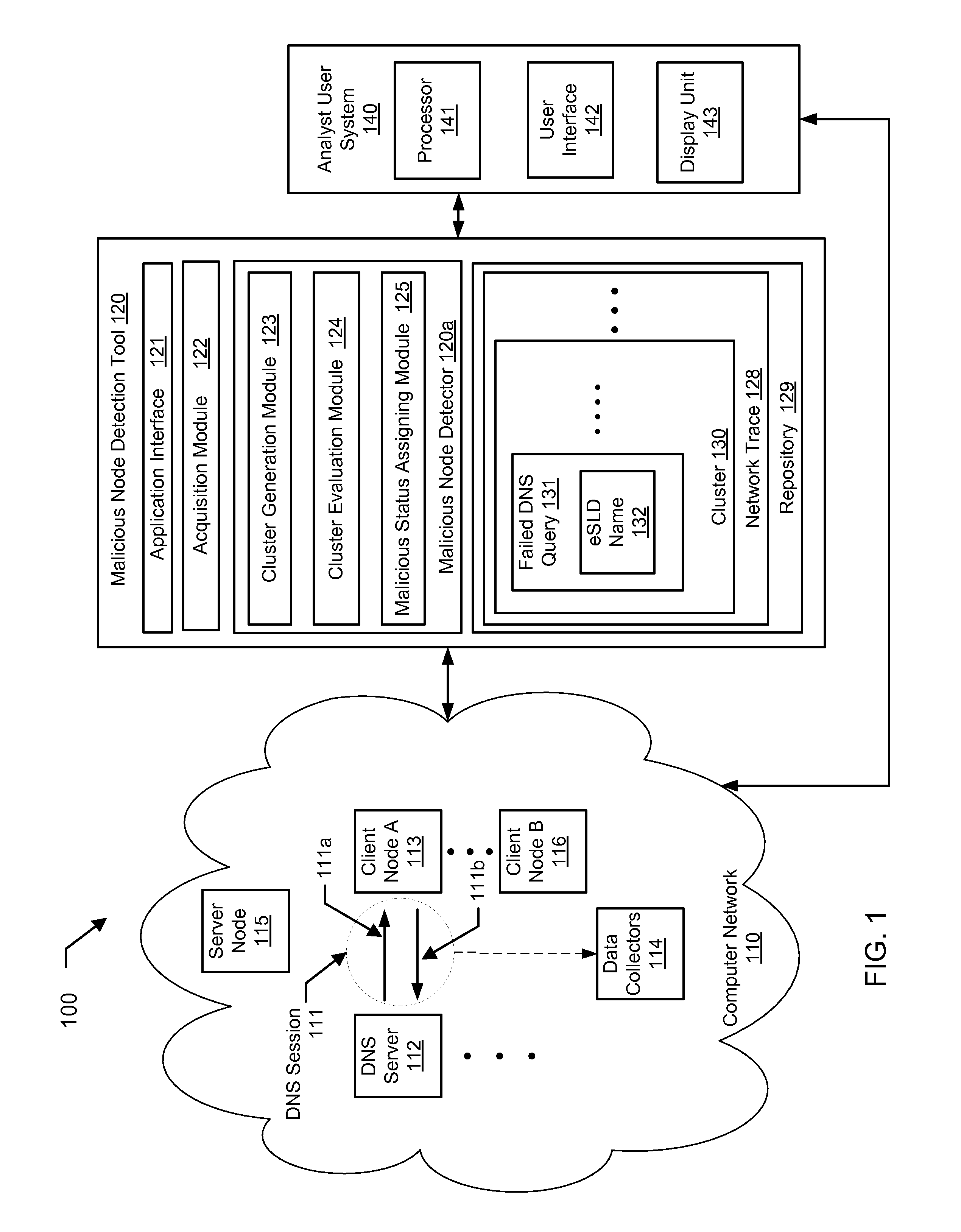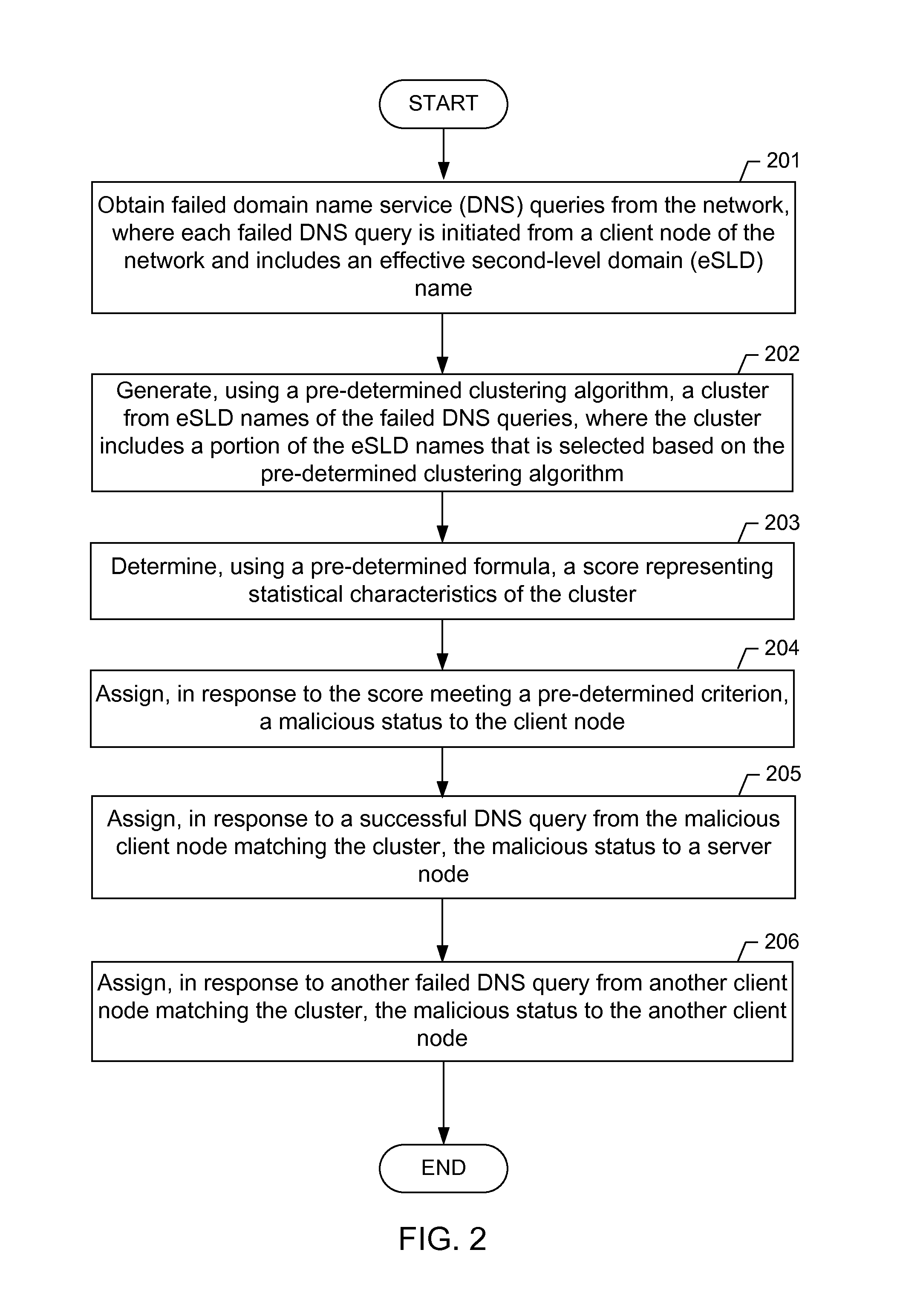Detecting suspicious network behaviors based on domain name service failures
a domain name service and network behavior technology, applied in the direction of transmission, electrical equipment, platform integrity maintenance, etc., can solve the problems of increasing dns abuse, requiring labor-intensive effort, and botnets persistently abused the dns infrastructur
- Summary
- Abstract
- Description
- Claims
- Application Information
AI Technical Summary
Benefits of technology
Problems solved by technology
Method used
Image
Examples
Embodiment Construction
[0012]Specific embodiments of the invention will now be described in detail with reference to the accompanying figures. Like elements in the various figures are denoted by like reference numerals for consistency.
[0013]In the following detailed description of embodiments of the invention, numerous specific details are set forth in order to provide a more thorough understanding of the invention. In other instances, well-known features have not been described in detail to avoid obscuring the invention.
[0014]Embodiments of the invention provide a method and system for determining a node in a network to be malicious by analyzing failed DNS queries initiated by the node. In one or more embodiments, the malicious node is a bot and the failed DNS queries correspond to the bot's attempt to contact the C&C using a DGA. In one or more embodiments, the bot uses the DGA to resolve a correct domain name of the C&C from multiple domain names registered by the botmaster. The DGA causes the bot to g...
PUM
 Login to View More
Login to View More Abstract
Description
Claims
Application Information
 Login to View More
Login to View More - R&D
- Intellectual Property
- Life Sciences
- Materials
- Tech Scout
- Unparalleled Data Quality
- Higher Quality Content
- 60% Fewer Hallucinations
Browse by: Latest US Patents, China's latest patents, Technical Efficacy Thesaurus, Application Domain, Technology Topic, Popular Technical Reports.
© 2025 PatSnap. All rights reserved.Legal|Privacy policy|Modern Slavery Act Transparency Statement|Sitemap|About US| Contact US: help@patsnap.com



